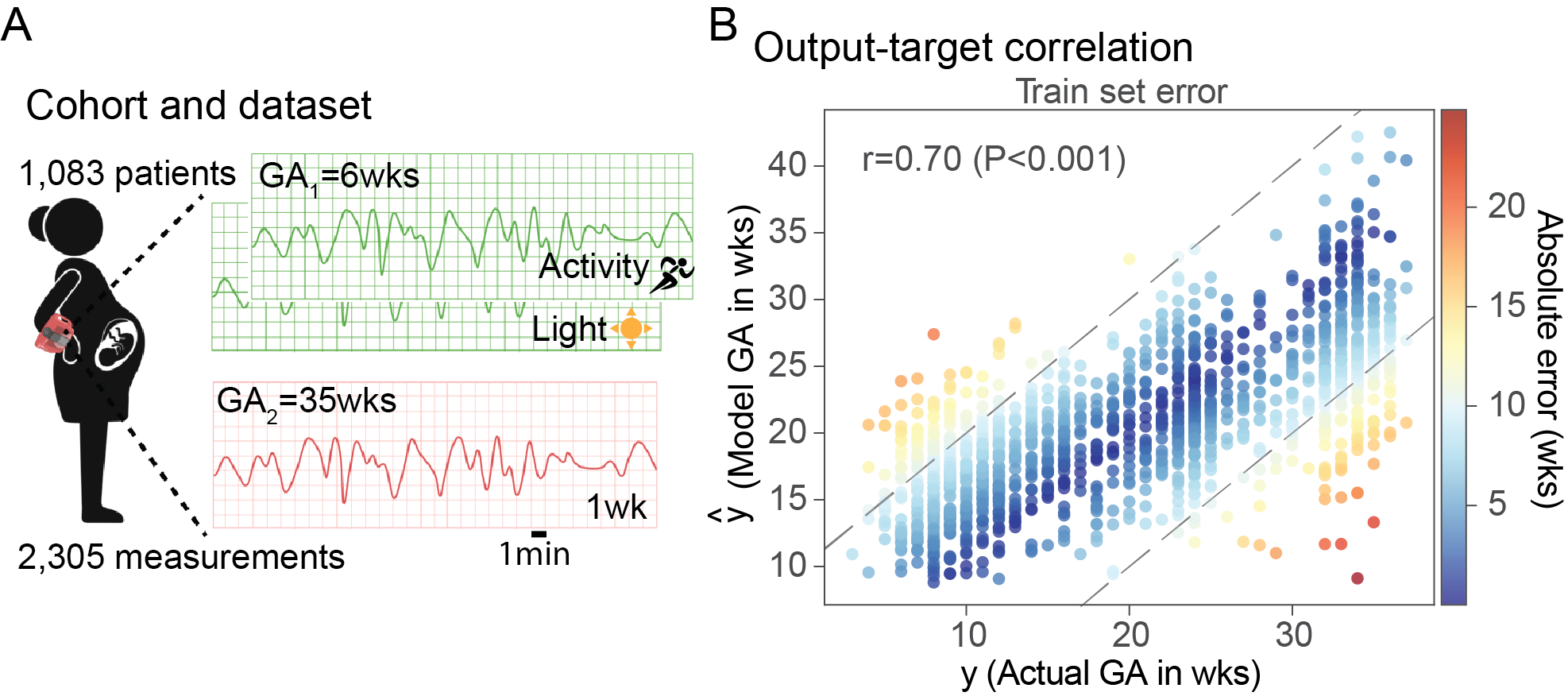Title:
Deep Representation Learning of Physical Activity and Sleep Patterns During Pregnancy Identifies post-hoc Inferences Associated with Prematurity
Authors:
Neal G. Ravindra, Camilo Espinosa, Eloise Berson, Thanaphong, Phongpreecha, Peinan Zhao, Martin Becker, Alan L. Chang, Sayane Shome, Ivana Maric, Davide De Francesco, Samson J. Mataraso, Geetha Saarunya, Melan Thuraiappah, Lei Xue, Brice Gaudilliere, Martin S. Angst, Gary M. Shaw, Erik D. Herzog, David Stevenson, Sarah K. Englands, and Nima Aghaeepour
Summary:
Preterm birth (PTB) is the leading cause of infant mortality globally. While research has focused on the development of predictive models for PTB, cost-effective interventions have remained understudied. Physical activity and sleep present unique opportunities for interventions in low- and middle-income populations. However, objective measurement of physical activity and sleep remains challenging and self-reported metrics suffer from low-resolution and accuracy that decays over time. In this study, we use physical activity data collected using a wearable device comprising over 181, 944 hours of data across N = 1, 083 patients. Using a new state-of-the art deep learning time-series classification architecture, we first develop a ”clock” of healthy dynamics in physical activity patterns during pregnancy by using gestational age (GA) as a surrogate for progression of pregnancy. We also developed a novel interpretability algorithm that integrates unsupervised clustering, model error analysis, feature attribution, and automated actigraphy analysis, allowing for model interpretation with respect to sleep, activity, and static clinical variables. Our model performs significantly better than 7 other machine learning and AI methods for modeling the progression of pregnancy based on measures of physical activity and sleep.
Importantly, we found that deviations from this normal ”clock” of physical activity and sleep changes during pregnancy are strongly associated with pregnancy outcomes. When our model underestimates GA, there are 0.52 fewer preterm births than expected (P = 1.01e − 67) and when our model overestimates GA, there are 1.44 times (P = 2.82e − 39) more preterm births than expected. Model error is negatively correlated with interdaily stability (P = 0.043), indicating that our model assigns a more advanced GA when an individual’s daily rhythms are less precise. Supporting this, our model attributes higher importance to sleep periods in predicting higher-than-actual GA, relative to lower-than-actual GA (P = 1.01e − 21). Combining prediction with interpretability allows us to robustly signal when activity behaviors increase or decrease the likelihood of preterm birth and advocates for the future development of clinical decision support through passive monitoring and suggestions around exercise habits and sleep patterns, which are easily implemented in low- and middle-income countries (LMICs). Beyond this particular application, the presented pipeline can be used to analyze high-fidelity time-series data in other translational studies utilizing wearable devices.
Keywords:
wearables, deep learning, time-series, pregnancy, physical activity, stress, sleep, machine learning
 Figure 1: series2signal GA “clock” for monitoring pregnancy and its application to data from wearable devices given to 1000+ pregnant individuals. (A) Cohort and wearable sensor data used in this study to train models on over 186,000 hours of data and associate inferences with patient attributes and outcomes. (B) Error groups created from our deep learning-based “clock” of pregnancy via comparison to an individual’s actual gestational age (GA) are significant predictors of pregnancy outcomes.
Figure 1: series2signal GA “clock” for monitoring pregnancy and its application to data from wearable devices given to 1000+ pregnant individuals. (A) Cohort and wearable sensor data used in this study to train models on over 186,000 hours of data and associate inferences with patient attributes and outcomes. (B) Error groups created from our deep learning-based “clock” of pregnancy via comparison to an individual’s actual gestational age (GA) are significant predictors of pregnancy outcomes.

